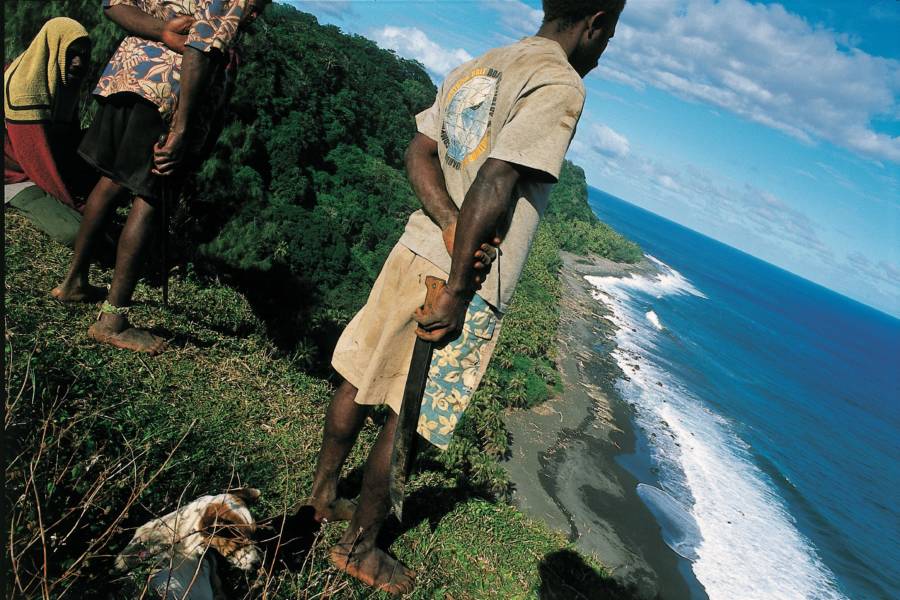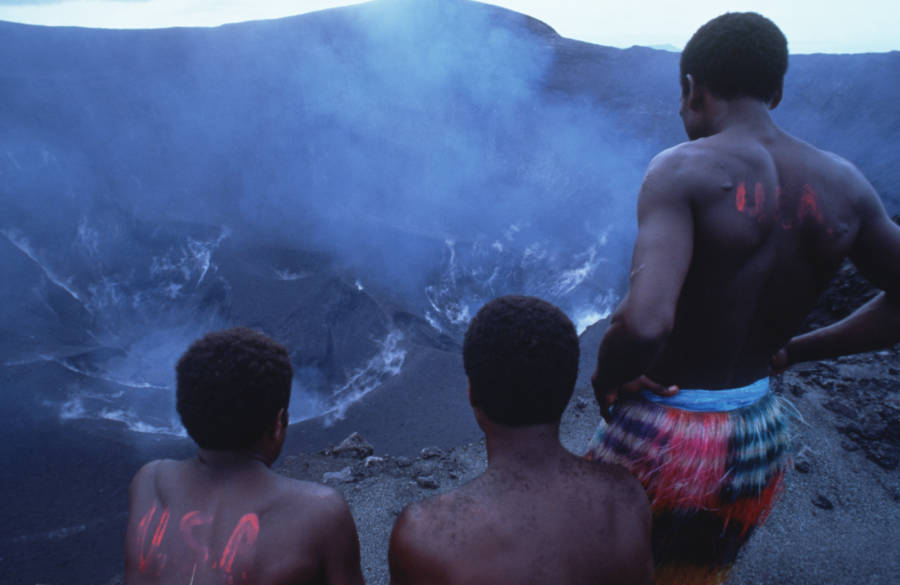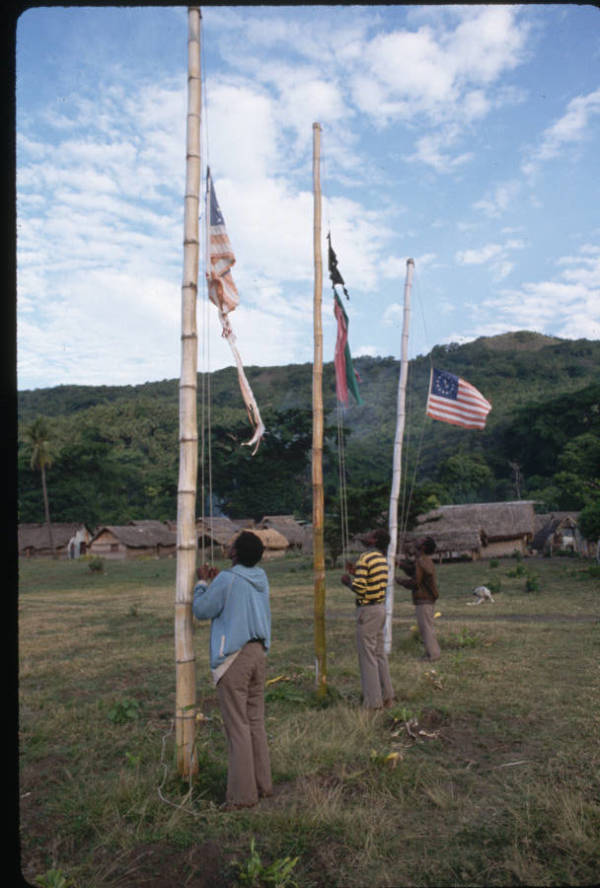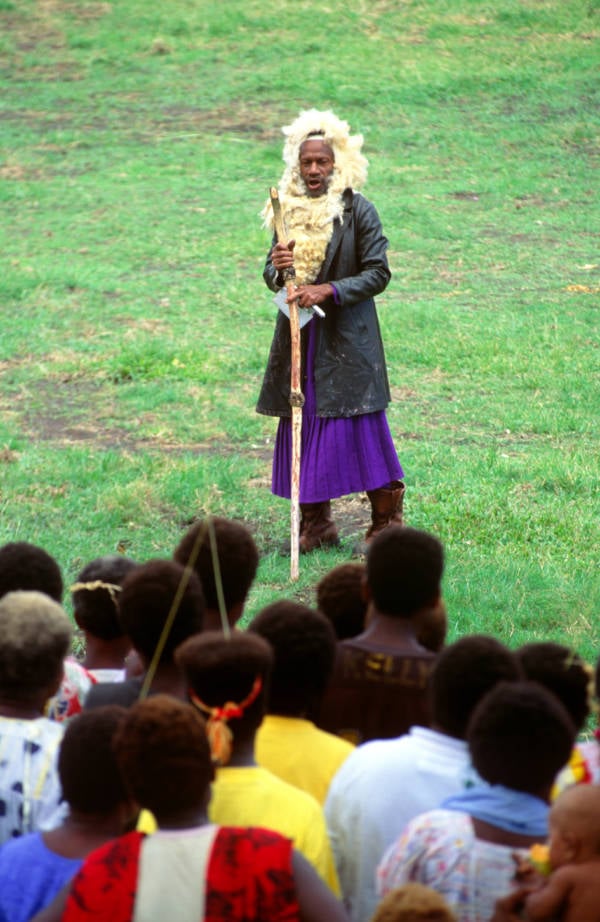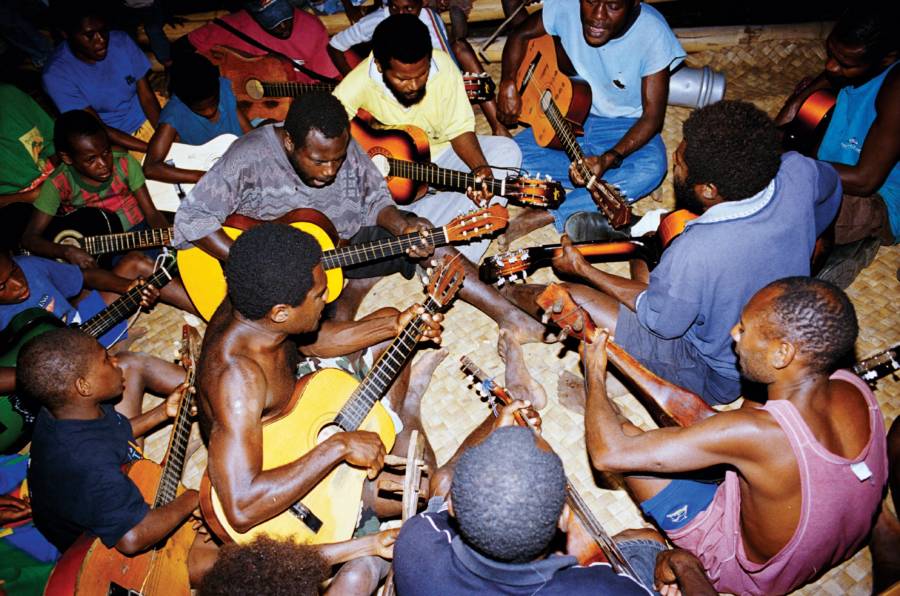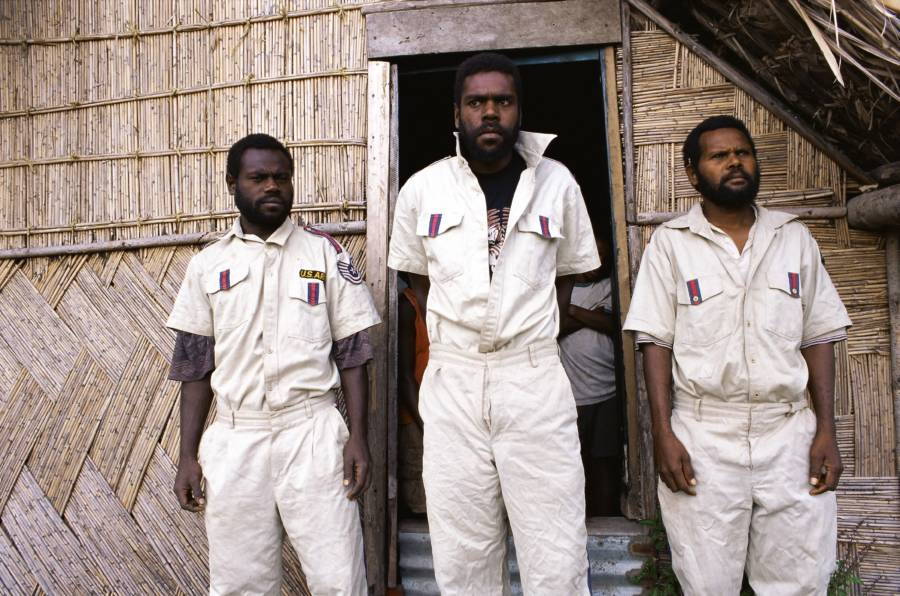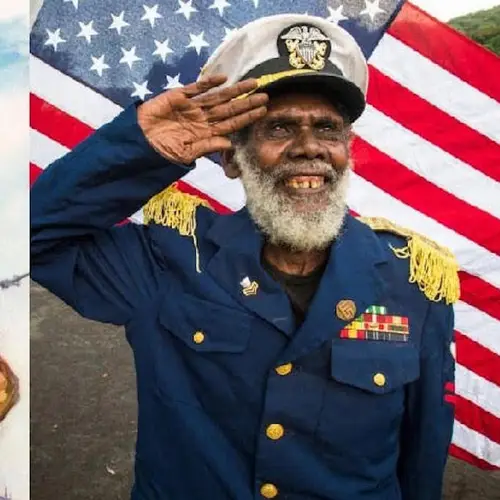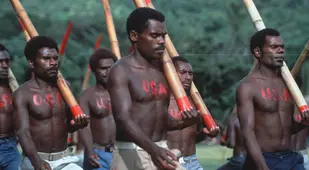In some South Pacific islands, cargo cults like the John Frum movement pray for planes to bring them material goods — just like American troops did during World War II.
Across Melanesia, some Indigenous people are known to look to the heavens, watching for "gods from the sky." But these aren't your typical deities — they're said to bring riches to the South Pacific on roaring cargo planes. Believers are part of a curious phenomenon called "cargo cults."
Many cargo cults have roots in World War II, during which islanders witnessed American troops bringing surpluses of Western goods, or "cargo." Locals were amazed by the technologically advanced ships and planes used to deliver the products, and some interpreted this event as magical.
When the war ended and the cargo stopped coming, some natives began praying fervently for the goods to return. Members of cargo cults became convinced that a supernatural source would one day return to Melanesia with riches, just like the products that U.S. soldiers brought in the 1940s.
Surprisingly, some cargo cults had emerged even before World War II. As colonizers spread across the South Pacific and suppressed native traditions, stories emerged about a "savior" who would reward Indigenous people for resisting colonialism. For those who already believed in this messiah, the delivery of cargo during the war seemed to confirm the legend.
So after the conflict, these cults spread further across Melanesia, from Papua New Guinea to Vanuatu to Fiji. Though the popularity of cargo cults has declined significantly in recent years, some believers remain to this day.
The Emergence Of Anti-Colonial Cults Before World War II
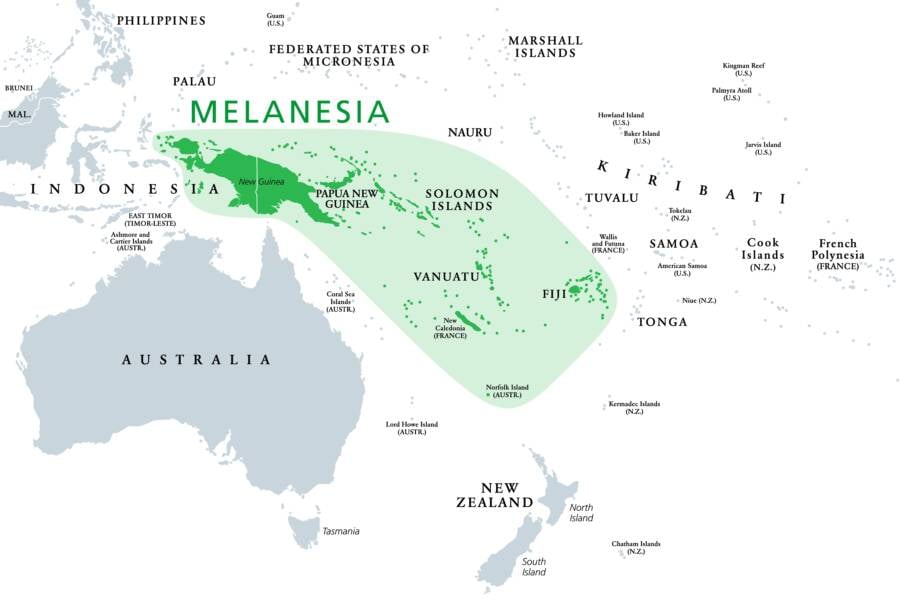
Peter Hermes Furian/Alamy Stock PhotoA map of Melanesia, a network of some 2,000 islands, where cargo cults emerged in the early 20th century.
Though cargo cults intensified during World War II, they emerged earlier than that. In Fiji, the Tuka movement began near the end of the 19th century. In New Guinea, the Taro Cult started around 1919. As ZME Science noted in 2023, these Melanesian cults were a direct response to increasing colonialism in the South Pacific region. They often included some combination of these elements: anti-colonialist sentiment, belief in the imminent transformation of society, and worship of Western material goods.
One of the best-documented cargo cults, however, emerged in New Hebrides, now known as Vanuatu, in the 1930s. Then, local lore states that elders were visited by a white man named John Frum after they drank copious amounts of the intoxicating drink kava. Frum urged them to throw off the shackles of colonialism and return to their native traditions.
There is little evidence that such a figure actually existed, and it's possible that the name "Frum" came from the local pronunciation of the word "broom" — as in to sweep, or "broom," white colonizers off the islands. But nevertheless, Frum's anti-colonialism message stuck with the natives.
"He said we should throw away their money and clothes, take our children from their schools, stop going to church and go back to living as kastom people," Chief Kahuwya, a tribal leader in Vanuatu, explained to Paul Raffaele of the Smithsonian Magazine in 2006. "We should drink kava, worship the magic stones and perform our ritual dances."
Oral histories on Vanuatu's Tanna Island stated that if Indigenous people returned to their old ways, John Frum would reward them. Then, with the beginning of World War II, the prophecy seemed to come true.
The Rise Of Cargo Cults During World War II
After the Japanese attack on Pearl Harbor on Dec. 7, 1941, millions of American troops poured into the Pacific. While keeping a close eye on the islands to curb the ongoing Japanese expansion, they also brought goods like chocolate, Coca-Cola, and cigarettes. They arrived in technologically advanced airplanes, drove vehicles that appeared to be powered by magic, and seemed able to conjure foodstuffs without planting crops or trading.
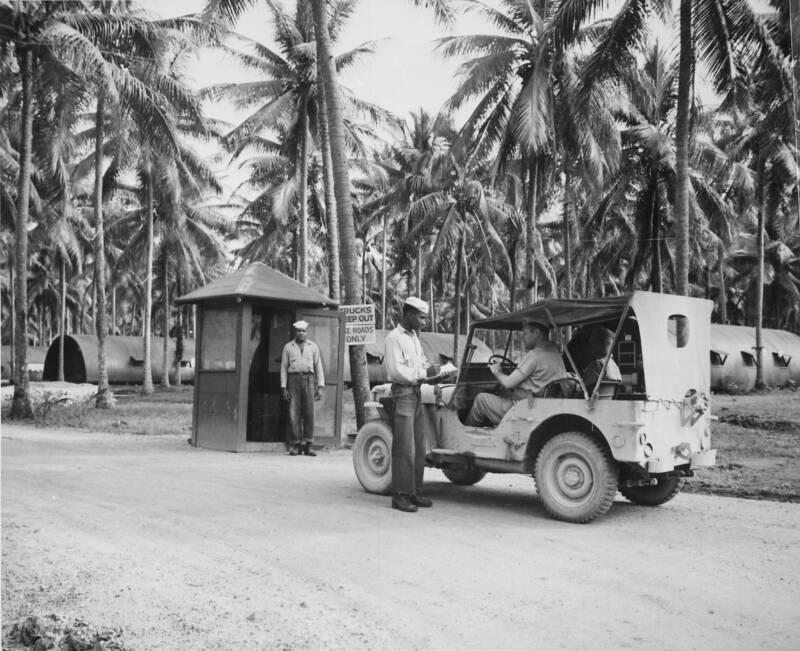
U.S. National Archives and Records AdministrationThe entrance of a U.S. Navy base camp on Vanuatu during World War II.
Cooperative Indigenous people in the South Pacific were often rewarded for their services as guides or hosts with new clothes, food, weapons, or other gifts, which U.S. troops seemed able to produce from thin air. For some islanders in Vanuatu especially, this seemed to confirm the legend of John Frum — and gave him a decidedly American character.
"John Frum had promised that Americans would bring good things to the people of Tanna and would be their brothers in the fight for freedom," documentarian Jessica Sherry, who visited Tanna Island and made the documentary Waiting for John, explained to HistoryNet in 2016.
"The American military brought a miraculous amount of cargo to many remote islands in the South Pacific — refrigerators, canned food, planes, trucks — all technologically advanced goods the islanders had never seen, especially in such vast quantities. The arrival of the Americans fulfilled John's prophecy and changed the balance of power in the region, undermining European authority and empowering the native peoples."

U.S. National Archives and Records AdministrationNot only were Indigenous people on Vanuatu impressed by the Americans' advanced technology, but also because the U.S. troops included both Black and white soldiers.
Indeed, another explanation for John Frum's name is that it emerged during an encounter with a U.S. soldier, who called himself "John from America."
But just as suddenly as the American forces had arrived, they vanished — and so did their seemingly miraculous manufactured goods. In their absence, cargo cults prayed that they would someday return.
The Lingering Existence Of Cargo Cults Throughout Melanesia
After Americans and their cargo vanished from Melanesia after World War II, Indigenous people set about trying to bring them back. To do so, some cargo cult followers began to mimic the behavior of the U.S. troops.
They built mock air control towers out of bamboo, fake radio devices out of mud and straw, and full replica airplanes out of wood. They sometimes even carved "airstrips" out of the jungle, dressed like American troops, and used flags and other symbols to attract planes in the sky. In some places, the arrival of white travelers also prompted the sacrifice of pigs, in the belief that metal "Great Pigs" would subsequently appear in the heavens overhead.
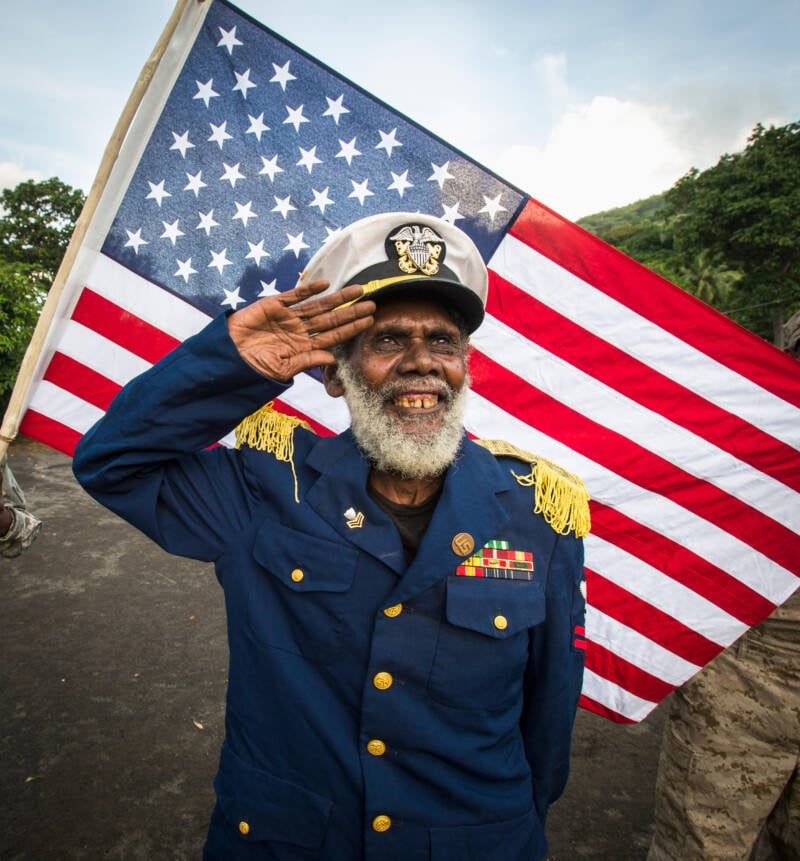
Image Source Limited/Alamy Stock PhotoA leader of the John Frum cult saluting the American flag in 2014.
But the planes, and their abundant cargo, never came.
In most places, this has led to a dwindling of cargo cult followers, especially since Melanesia has become increasingly industrialized in recent years, and islanders have had more regular contact with Westerners. But a small number of remaining cargo cult followers are convinced that they're simply not performing the correct ceremonies to bring the planes and ships back.
"It eventuated that the expected cargo consisted of tinned meat, bags of rice, steel tools, cotton cloth, tinned tobacco, and a machine for making electric light," anthropologist Peter Lawrence wrote in his 1964 book Road Belong Cargo. "It would come from God in Heaven. The people had waited for it for years but did not know the correct procedures for getting it."
Even on Vanuatu's Tanna Island, belief in cargo cults has dropped dramatically. The John Frum movement had some 5,000 followers in 1990, but just 500 in 2022 — partly due to the growth of Christianity in the area.
But many people on Tanna Island still celebrate "John Frum Day." Each year on February 15th, young men paint "USA" in red on their chests, hoist sticks of bamboo "rifles," and march in a military-like style. While some locals participate for the sake of tradition, others do so in the genuine hope that cargo planes, rich with American goods, will return someday.
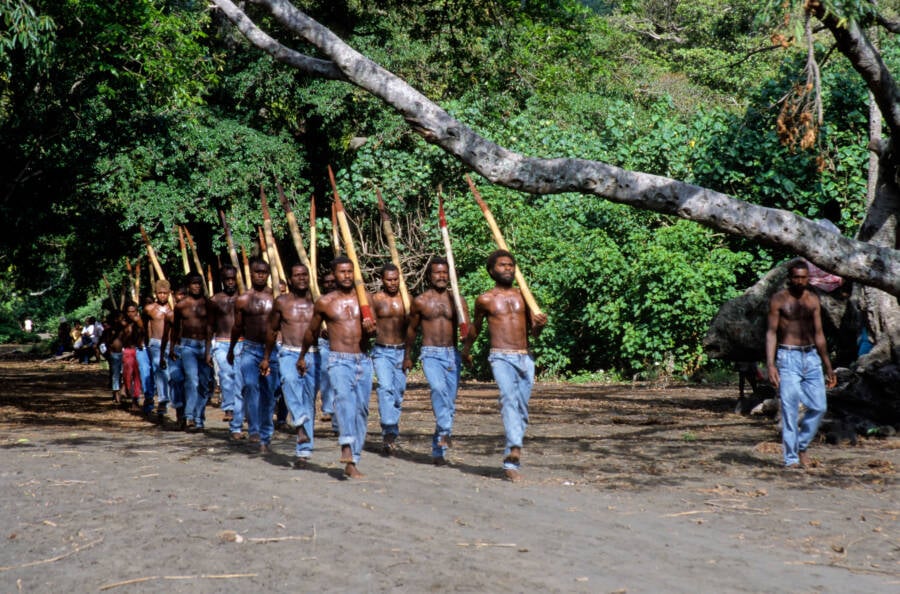
incamerastock/Alamy Stock PhotoMen marching on John Frum Day, which takes place on February 15th every year on Tanna Island.
So far, they haven't. But as one local chief told Smithsonian writer Paul Raffaele, "You Christians have been waiting 2,000 years for Jesus to return to Earth, and you haven't given up hope." And thus, the remaining cargo cults continue to hold out hope across Melanesia to this day.
Next, learn what life was like in nine infamous cults — according to survivors who got out. Then, read about four virtually uncontacted tribes that the outside world knows almost nothing about.
